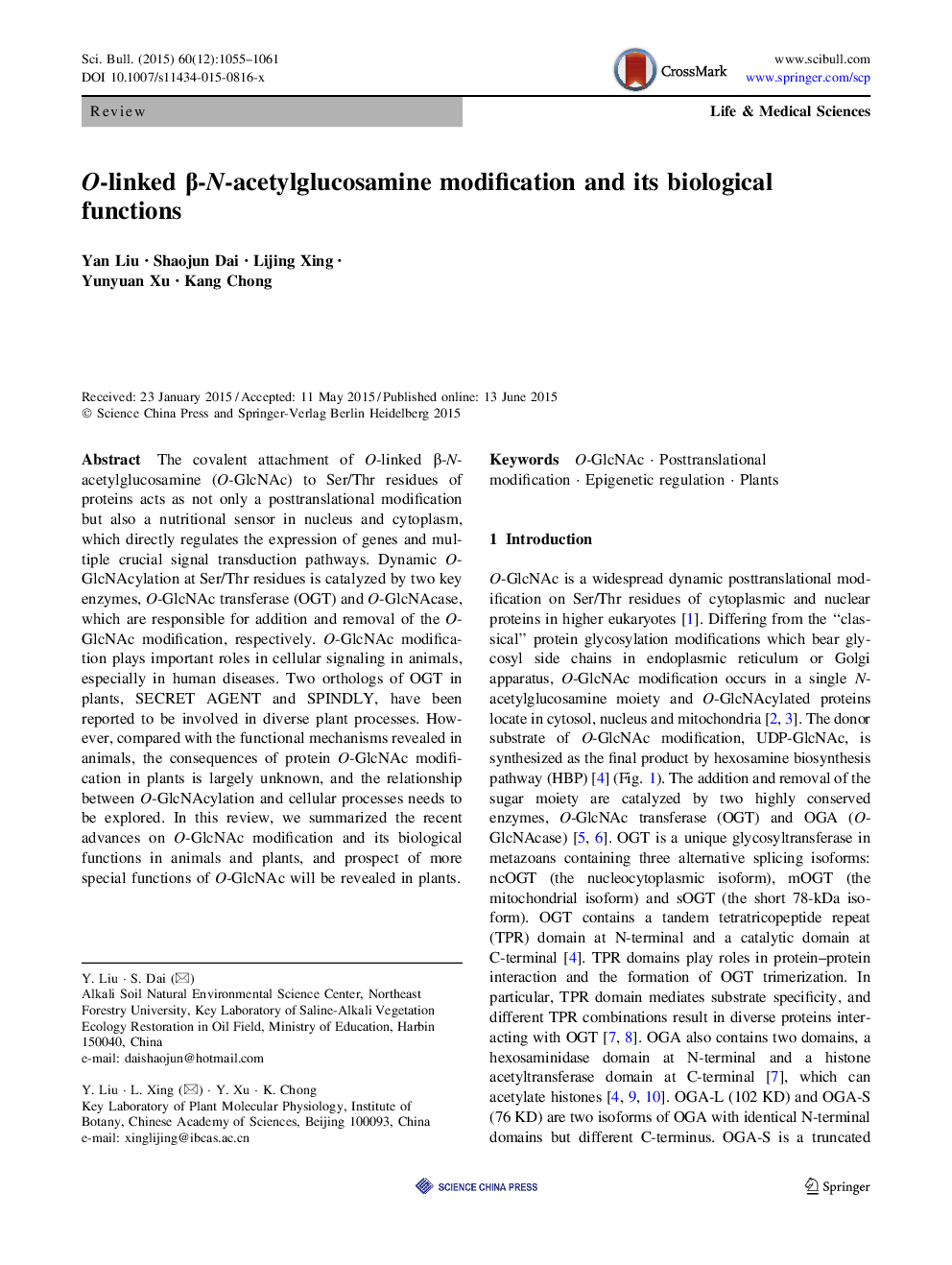| Article ID | Journal | Published Year | Pages | File Type |
|---|---|---|---|---|
| 5789275 | Science Bulletin | 2015 | 7 Pages |
Abstract
The covalent attachment of O-linked β-N-acetylglucosamine (O-GlcNAc) to Ser/Thr residues of proteins acts as not only a posttranslational modification but also a nutritional sensor in nucleus and cytoplasm, which directly regulates the expression of genes and multiple crucial signal transduction pathways. Dynamic O-GlcNAcylation at Ser/Thr residues is catalyzed by two key enzymes, O-GlcNAc transferase (OGT) and O-GlcNAcase, which are responsible for addition and removal of the O-GlcNAc modification, respectively. O-GlcNAc modification plays important roles in cellular signaling in animals, especially in human diseases. Two orthologs of OGT in plants, SECRET AGENT and SPINDLY, have been reported to be involved in diverse plant processes. However, compared with the functional mechanisms revealed in animals, the consequences of protein O-GlcNAc modification in plants is largely unknown, and the relationship between O-GlcNAcylation and cellular processes needs to be explored. In this review, we summarized the recent advances on O-GlcNAc modification and its biological functions in animals and plants, and prospect of more special functions of O-GlcNAc will be revealed in plants.
Related Topics
Physical Sciences and Engineering
Chemistry
Chemistry (General)
Authors
Yan Liu, Shaojun Dai, Lijing Xing, Yunyuan Xu, Kang Chong,
